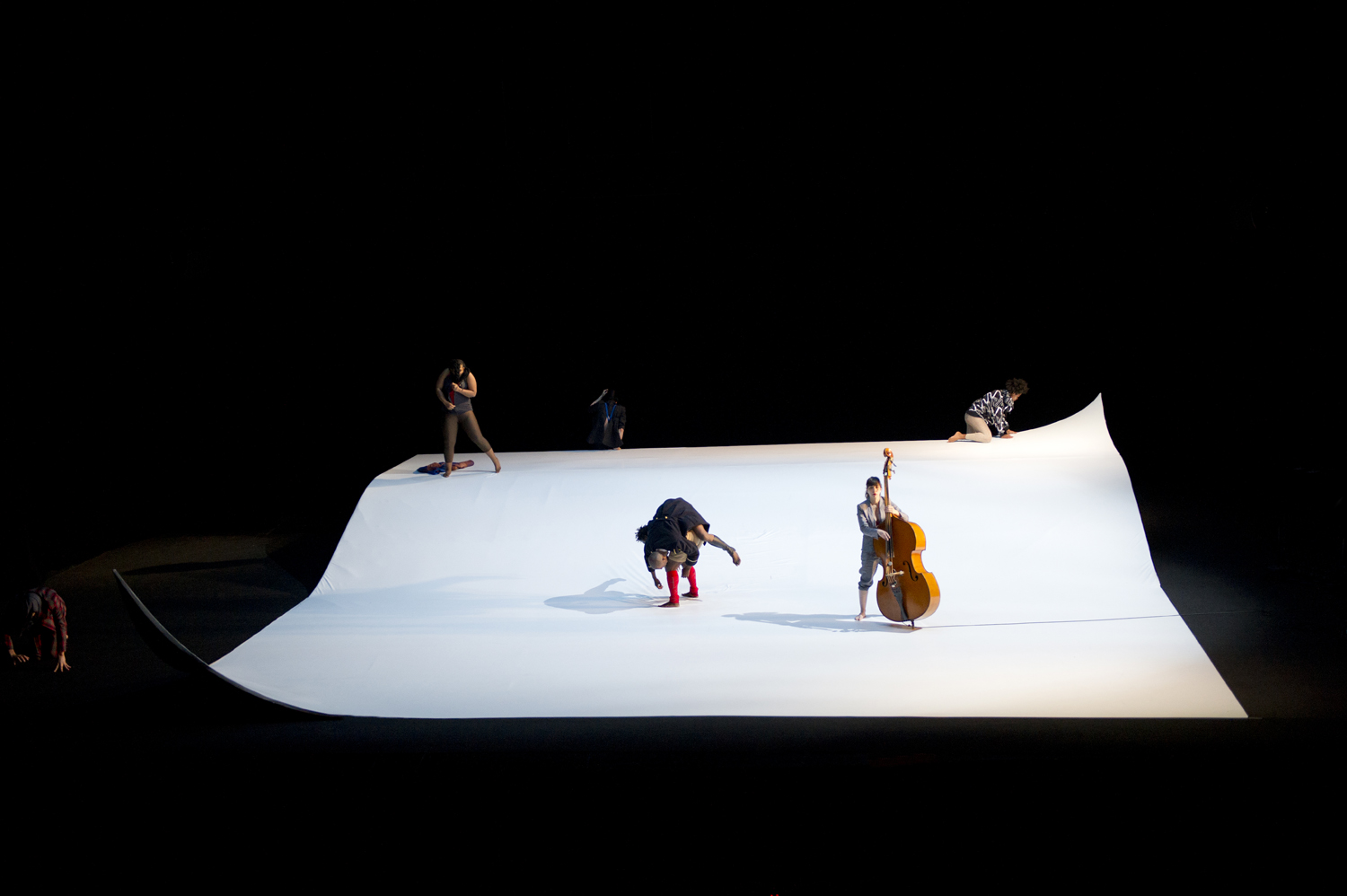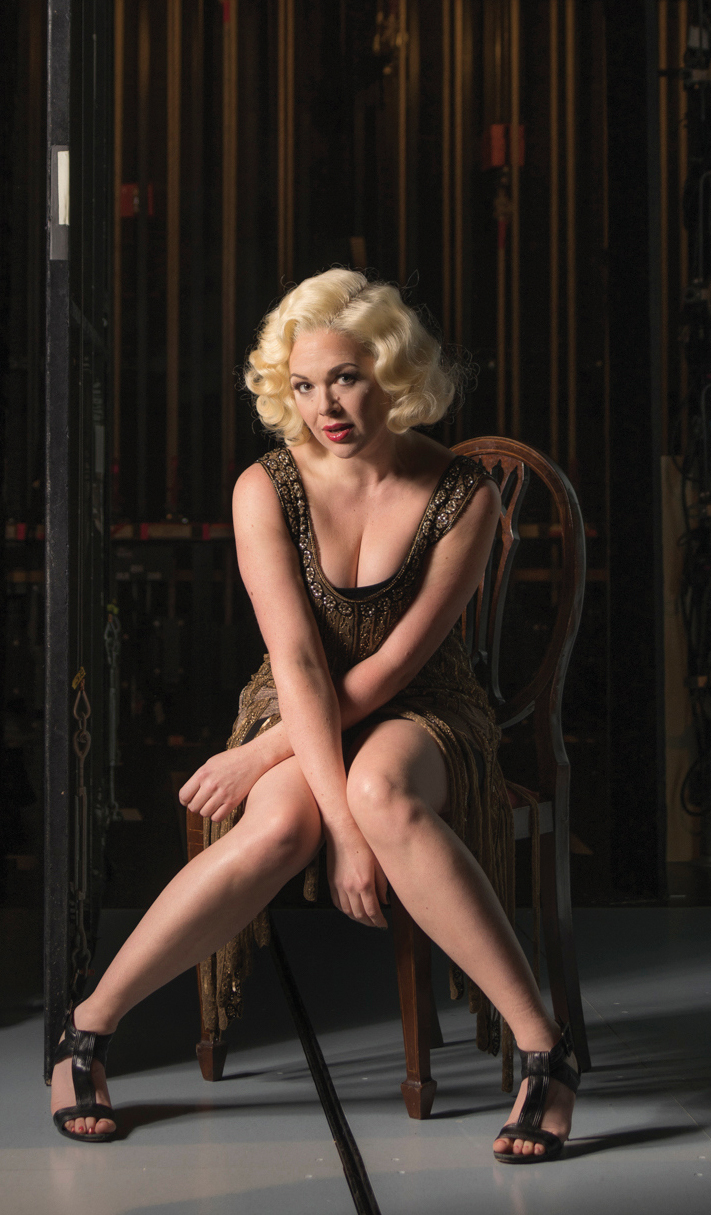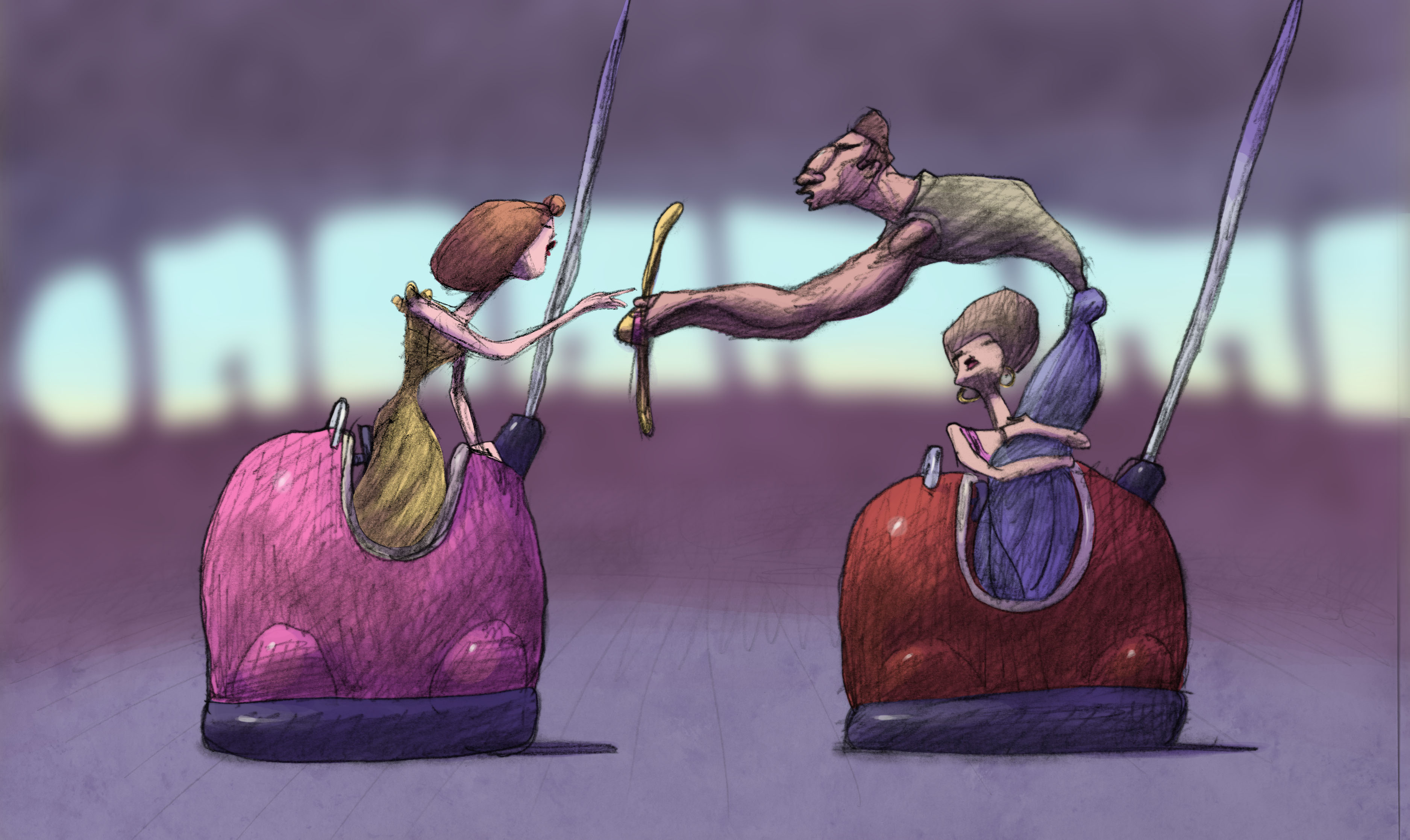Thursday, May 8
Baron Samedi
Choreographer Alain Buffard began his dancing life studying with Alwin Nikolais, and he seems to have taken to heart the American’s enthusiasm for unlikely multimedia combinations. Although Buffard’s oeuvre doesn’t resemble Nikolais’ abstract worlds, the French dancemaker shares his disregard for traditional vocabulary and structures. In Baron Samedi, named for a dandy skeleton in the Haitian voodoo pantheon, Buffard reaches beyond the deity’s religious identity to his deeper role as a trickster and a force for disruption. The 2012 work is an examination of colonialism that draws as much from current affairs as historical events. Danced on an undulating stage (a physical manifestation of Samedi’s destabilizing nature), and set to 11 Kurt Weill songs (performed live), Baron Samedi makes it clear that nothing is really as it might seem. Buffard, who had been working to acclaim in Europe since 1998, died last December. This introduction for American audiences, only here and in New York, will likely also be our last look. (Through Sun.) On the Boards, 100 W. Roy St., 217-9888, onthe boards.org. $25. 8 p.m.
Sandra Kurtz
Friday, May 9
Carol Burnett
Reading the recent biography of the late New Yorker film critic Pauline Kael (because this is what film critics do with their free time), I was delighted to find that she was a big fan of The Carol Burnett Show, which ran from 1967 to 1978. (Kael’s opinion of Burnett’s few prior movies is a different matter.) So was I, so were my parents, and so I suspect are an awful lot of television watchers whose taste was formed during those pre-cable days of network dominance. Say what you will about the cornucopia of HBO, Netflix, and streaming today; Burnett, at 81, is one of the dwindling few stars from the era of a unified TV audience. Hers was a show families could watch together, with comedy sketches that could be discussed the next day at the office or school. Tonight—sadly without her old ensemble of Harvey Korman, Vicki Lawrence, Lyle Waggoner, and Tim Conway—she’ll share recollections of the old show, take questions from the audience, and bask in the adoration of her fans. (A whole new generation has been introduced to the program since the 2012 DVD box set.) Maybe she can shed some light on Korman’s inability to keep a straight face, as in the famous dentist skit with Conway: It’s on YouTube, and you need to watch it immediately. The Paramount, 911 Pine St., 877-784-4849, stg presents.org. $31–$121. 7:30 p.m.
Brian Miller
Saturday, May 10
Deco Japan
This is a somewhat unusual traveling show in that it comes from a single private collection: that of Florida’s Robert and Mary Levenson. The specificity and period (1920–1945) are also unusual. Among the roughly 200 items on view—prints, furniture, jewelry, etc.—we won’t be seeing the usual quaint cherry-blossom references to Japan’s hermetic past. The country opened itself late, at gunpoint, to the West, and industrialized quite rapidly. By the ’20s, there was in the big cities a full awareness of Hollywood movies, European fashions, and streamlined design trends. Even if women didn’t vote, they knew about Louise Brooks and her fellow flappers. We may think that, particularly during the ’30s, the country was concerned with militarism and colonial expansion, but these objects reveal the leisure time and sometime frivolity of the period. For an urbane class of pleasure-seekers, necessarily moneyed, these were boom times. The luxe life meant imitating the West to a degree, yet there are also many traces of Japan’s ancient culture within these modern accessories. Think of the sybarites during the Edo period, for instance, and the women depicted here look more familiar—even if they now wear cocktail dresses instead of kimonos. (Through Oct. 19). Seattle Asian Art Museum, 1400 E. Prospect St., 654-3100, seattleartmuseum.org. $5–$7. 10 a.m.–5 p.m
.
Brian Miller
Sunday, May 11
Seattle Youth Symphony
There are orchestral works that a youth group can play with relish and sound their best; there are challenging works that stretch the players’ technique; then there are works that make you wonder what the hell the conductor was thinking in programming it. Ravel’s ballet Daphnis et Chloe (1912) is one of these. The Seattle Youth Symphony is playing the third section of the ballet this afternoon; from its opening sunrise, the most glorious ever written, to its rousing “Danse generale” finale, it’s one of the trickiest orchestral works in the repertory, especially for the winds (professional orchestras often use excerpts as required audition pieces). Not only are the individual parts highly virtuosic, but with Ravel’s magically translucent, diaphanous scoring, there’s nowhere to hide. (Back in the day with my college orchestra I played both this and The Rite of Spring; the Ravel was harder.) Conductor Stephen Rogers Radcliffe is grouping it with favorites by Tchaikovsky and Wagner, and has invited cellist Joshua Roman to play Aaron Jay Kernis’ Dreamsongs. Written for Roman, who premiered it in Ohio a year ago, it’s a showcase of inventive color, from the bright twang of guitar-picked cello to the djembe, wooden rattle, and gourd in the percussion section. Benaroya Hall, Third Ave. & Union St., 362-2300, syso.org. $15–$45. 3 p.m.
Gavin Borchert
Monday, May 12
Pulp Fiction
Yes, Pulp Fiction is 20 years old. How many motherfucking candles does it deserve on its motherfucking cake? As many motherfucking candles as Jules Winnfield wants, that’s how many. Such is the movie’s influence that, also owing to the prior Reservoir Dogs, a whole generation of moviegoers has been raised in what we now call the Post-Tarantino Era. As the director and Oscar-winning co-writer of Pulp Fiction, Quentin Tarantino influenced countless young filmmakers in ways both good and bad. Everyone wanted to make crime movies full of long, loopy, colorful speeches, using as much profanity as possible, attaching odd pop-culture digressions to the scaffolding of traditional movie plots. I won’t bore you with the long list of Tarantino wannabes; the truth is that he’s outlasted most of them, validated himself in Hollywood with more unlikely hits (e.g., Inglourious Basterds), attracted big stars with his writing, and finally earned a whole Oscar—not just a half—for scripting Django Unchained (which also did a whole lot more business than anyone expected). But this is the movie that brought Tarantino to the mainstream, with its wonderfully elliptical plotting and abrupt reversals and tangents, plus that all-star cast. (If you need reminding: John Travolta, Uma Thurman, Tim Roth, Bruce Willis, Christopher Walken, Amanda Plummer, and Harvey Keitel deliver line after quotable line. Let’s not speak of Maria de Medeiros.) The movie runs through Thursday. Grand Illusion, 1403 N.E. 50th St., 523-3935, grandillusioncinema.org. $5–$8. 8 p.m.
Brian Miller
E










